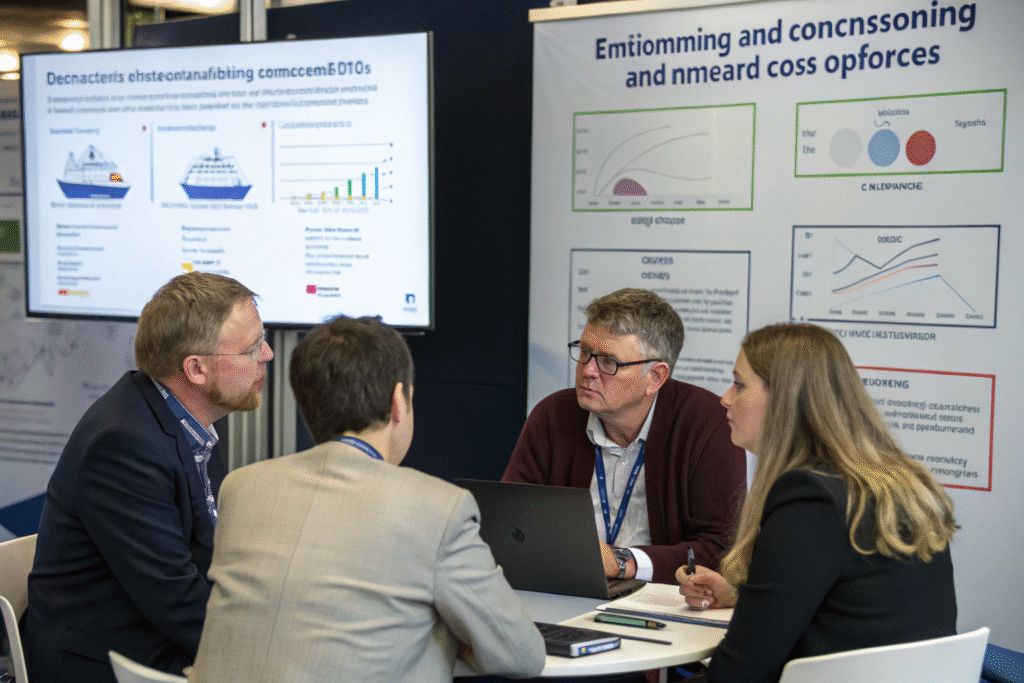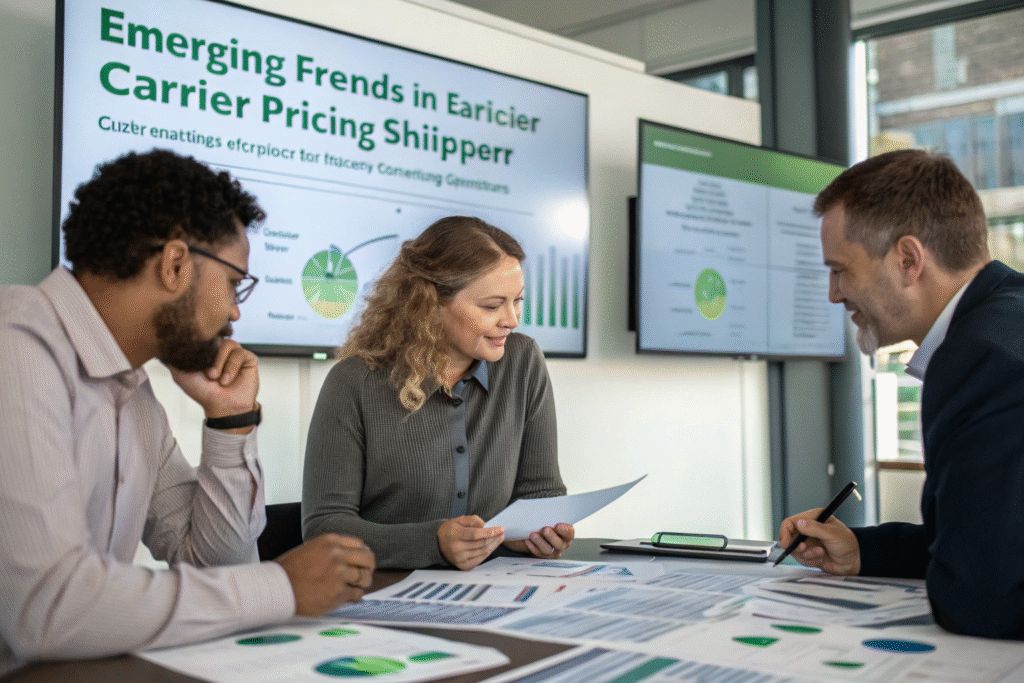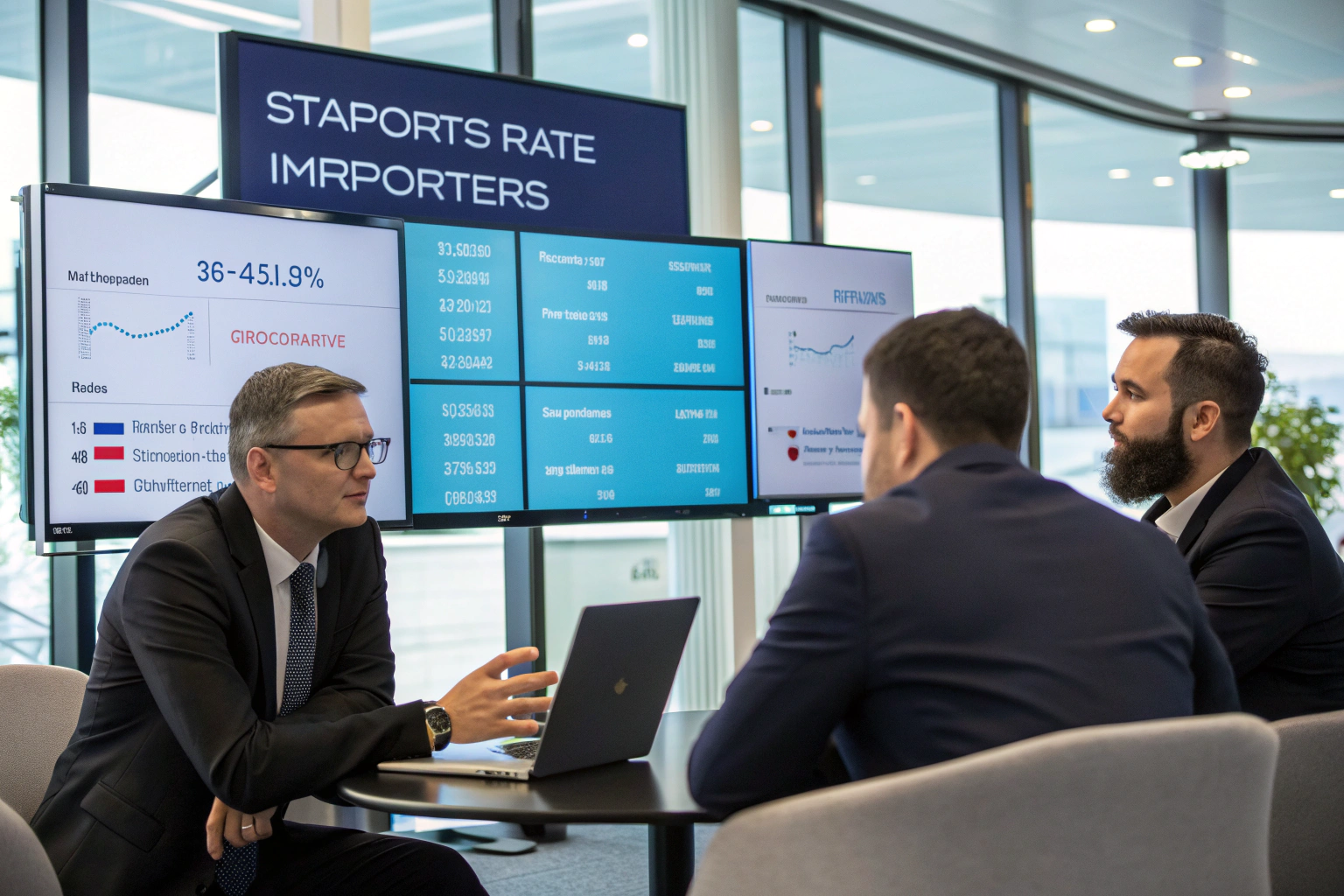With ocean freight costs experiencing significant volatility and new regulatory changes approaching, importers are increasingly concerned about controlling their shipping budgets. The difference between well-negotiated rates and spot market pricing can impact profitability by 15-30%, making strategic rate management more important than ever.
You can secure the best ocean freight rates in 2025 through strategic carrier relationships, volume consolidation, flexible scheduling, and leveraging new digital procurement tools. Success will require longer-term planning, data-driven negotiation, and understanding how upcoming environmental regulations will impact capacity and pricing.
Let's examine the specific strategies that will deliver the most competitive ocean freight rates while maintaining service reliability in the evolving maritime landscape.
How will new environmental regulations affect 2025 rates?
The International Maritime Organization's new CII (Carbon Intensity Indicator) regulations taking full effect in 2025 will fundamentally reshape ocean freight pricing. Carriers face significant costs to comply, which will inevitably be passed through to shippers through new surcharge structures and rate adjustments.
The CII regulations require ships to progressively reduce their carbon intensity, forcing slower steaming, vessel upgrades, and potentially removing older, less efficient vessels from service. This effectively reduces available capacity while increasing operating costs. Additionally, the EU Emissions Trading System now includes shipping, adding carbon allowance costs for Europe-bound voyages. Understanding these regulatory impacts will be crucial for interpreting rate structures and identifying carriers best positioned to manage these changes efficiently.

What new surcharges should you expect in 2025?
Prepare for these emerging cost components:
- CII compliance surcharges covering vessel efficiency investments
- ETS (Emissions Trading System) fees for Europe-bound shipments
- Slow steaming premiums for guaranteed transit times
- Vessel optimization charges for suboptimal routing to meet efficiency targets
- Green fuel transition fees supporting alternative fuel infrastructure
Understanding these surcharges will help you compare carrier offers more accurately.
How can you mitigate regulatory cost impacts?
Proactive strategies include:
- Selecting modern vessel operators with naturally better CII ratings
- Consolidating volumes to maximize vessel utilization efficiency
- Flexible scheduling allowing carriers to optimize vessel speeds
- Port pair optimization choosing more efficient routing options
- Seasonal planning avoiding peak surcharge periods when possible
These approaches can reduce your exposure to the full impact of regulatory cost increases.
What negotiation strategies will deliver the best rates?
The traditional annual RFP process is evolving toward more dynamic, data-informed approaches. Successful rate negotiations in 2025 will require deeper market intelligence, flexible commitment structures, and understanding carriers' evolving operational constraints.
The most effective negotiators combine firm volume commitments with flexibility on sailing schedules, utilize multi-carrier strategies to maintain competition, leverage benchmark data from digital platforms, and structure agreements that benefit both parties. Building true partnerships rather than transactional relationships often yields better rates and more reliable service during capacity constraints. We're seeing successful companies move toward 2-3 year agreements with built-in flexibility mechanisms to balance price stability with operational adaptability.

How can volume commitments improve your pricing?
Strategic volume management can reduce rates by 10-25% through:
- Tiered volume discounts that increase with commitment levels
- Lane-based allocations concentrating volumes on specific trade routes
- Multi-year agreements providing carriers with predictable business
- Equipment type optimization matching your needs with carrier assets
- Seasonal balancing helping carriers manage capacity fluctuations
These approaches make your business more valuable to carriers, translating to better pricing.
What role will digital procurement platforms play?
Digital freight platforms are transforming rate procurement through:
- Transparent benchmark data from thousands of transactions
- Automated RFP processes reaching more carriers efficiently
- Real-time market intelligence informing negotiation timing
- Performance analytics linking rate decisions to service outcomes
- Contract management streamlining agreement administration
Leveraging these platforms provides negotiation advantages previously available only to the largest shippers.
How does shipment planning impact freight rates?
The timing, characteristics, and flexibility of your shipments significantly influence the rates you can secure. Carriers increasingly value predictability, equipment utilization efficiency, and operational simplicity when pricing their services.
Planning 4-6 weeks ahead typically secures rates 8-15% better than last-minute bookings. Avoiding peak seasons like August-October (pre-holiday) and Chinese New Year periods can save 20-30% on premium charges. Optimizing your container utilization and providing accurate weight/volume information prevents reassessment charges and builds carrier confidence. The most cost-effective shippers maintain flexible cargo-ready dates that allow carriers to optimize vessel space utilization.

What planning horizons yield the best results?
Optimal planning varies by trade lane:
- Transpacific eastbound: 5-6 weeks for best pricing
- Asia-Europe: 4-5 weeks for optimal rate positions
- Intra-Asia: 2-3 weeks given shorter transit times
- Seasonal products: 8-12 weeks to avoid peak surcharges
- Project cargo: 10-12 weeks for specialized equipment
These timelines balance price advantages with operational flexibility.
How can packaging optimization reduce costs?
Container optimization strategies include:
- Right-sizing packaging to maximize cube utilization
- Stackability improvements enabling safer, higher loading
- Weight distribution planning avoiding overweight containers
- Mixed commodity strategies filling containers more completely
- Pallet optimization maximizing floor space utilization
These approaches can reduce your per-unit costs by 5-15% through better container utilization.
What emerging trends will impact 2025 rate structures?
Beyond traditional supply-demand dynamics, several emerging trends will reshape how ocean freight is priced and procured. Understanding these developments will help you anticipate changes and position your organization advantageously.
We're observing the growth of green corridor partnerships with preferential rates for environmentally optimized shipments, increased carrier focus on destination efficiency (avoiding congested ports), more sophisticated dynamic pricing models, and value-based pricing for guaranteed capacity and transit times. The most successful shippers will understand these evolving carrier priorities and structure their shipping patterns to align with what carriers value most in the new market environment.

How will carrier alliances affect your rate strategy?
The evolving alliance landscape requires:
- Multi-alliance sourcing preventing over-dependence on any grouping
- Alliance-specific negotiations understanding each group's strengths
- Blank sailing anticipation building contingency plans for capacity reductions
- Port rotation awareness selecting services that match your logistics needs
- Alliance stability assessment considering potential restructuring impacts
Understanding alliance dynamics helps secure more reliable capacity at competitive rates.
What role will sustainability play in future pricing?
Green shipping initiatives are becoming cost factors through:
- Carbon-neutral options with verified emission reductions
- Vessel efficiency premiums for newer, cleaner ships
- Port environmental incentives for vessels using cleaner technologies
- Customer preference alignment meeting corporate sustainability goals
- Regulatory compliance advantages staying ahead of requirements
These sustainability factors will increasingly influence both costs and carrier selection criteria.
Conclusion
Securing the best ocean freight rates in 2025 will require a more sophisticated, data-driven approach than in previous years. Success will come from combining traditional negotiation tactics with understanding emerging regulatory impacts, leveraging new digital tools, building strategic carrier partnerships, and optimizing your shipping patterns to align with carrier priorities. The most successful importers will treat freight procurement as a strategic capability rather than a transactional activity, investing in the expertise, systems, and relationships needed to navigate the increasingly complex ocean freight landscape. By starting your preparation now, you can position your organization for cost-effective shipping throughout 2025 and beyond.









